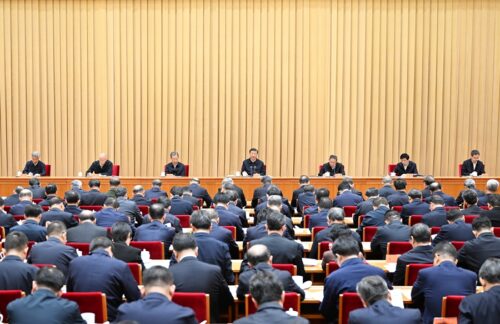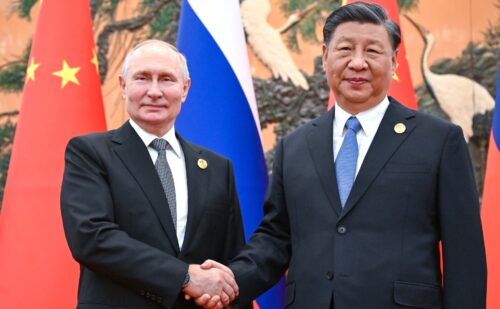Xi’s “little giants” are prospering on the Beijing Stock Exchange but they have a problem
China wants SMEs to invigorate the economy, and the plan seems to be working, according to the country’s newest stock exchange. But will smaller companies be able to withstand the supply chain shocks of the age of COVID?

China now has three stock exchanges: In Shanghai and Shenzhen, and — since last year and as yet much smaller and lesser known — in Beijing.
The Beijing Stock Exchange was launched to support the financing needs of Chinese SMEs, aka small-to-medium enterprises, or “little giants” (小巨人 xiǎo jùrén) as Xí Jìnpíng 习近平 calls them. It started trading in November 2021 with 81 listed companies, a number that has since grown to 89. Government messaging considers such SMEs as nimble, innovative, and resilient, and highly valuable to the economy for their integration of production, education and research.
Today, the Beijing Stock Exchange’s WeChat account reported that more than 80% of its listed companies listed on the Beijing Stock Exchange have released plans to issue cash dividends:
- The proposed dividend collectively amounts to 1.95 billion yuan ($295.08 million) an increase of 11.2% year-on-year. The cash dividend rate of 34 companies exceeds 40%.
- In 2021, the 89 companies listed in Beijing reported total revenues of 66.89 billion yuan ($10.11 billion), an increase of 31.1% year-on-year, and net profits of 7.25 billion yuan ($1.09 billion), an increase of 23.8% year-on-year.
- 88 of the 89 listed companies were profitable in 2021, and the net profits of 54 companies increased year-on-year.
- The 89 listed companies raised 18.89 billion yuan ($2.85 billion) through public offerings at an average of 210 million yuan ($31.76 million) per company.
The leading SMEs on the exchange include:
- BTR 贝特瑞, a producer of negative electrode materials for lithium batteries: Reported net profits of 1.44 billion yuan ($217.84 million) in 2021, a year-on-year increase of 191.4%.
- Jilin Tangu Carbon Fiber 吉林碳谷碳纤维, a producer of carbon fiber precursors: Reported net profits of 310 million yuan ($46.89 million) in 2021, a year-on-year increase of 126.1%.
The context
Beijing operates under the firm conviction of the foundational role to be played by SMEs: If SMEs are strong, the whole economy is strong.
- In the first quarter, the value added by industrial SMEs increased by 7.8% year-on-year, 1.3 percentage points higher than the industrial sector as a whole.
- The government has introduced a range of policies to support SMEs including tax refunds and tax rebates for R&D costs, export credits, a range of supporting services, and lavish subsidies: In 2021, companies listed on the Beijing Stock Exchange received a total of 710 million yuan ($107.40 million) in government subsidies, a year-on-year increase of 35.7%.
Despite the support from Beijing, China’s SMEs have one Achilles heel, especially during the era of COVID: Logistics. SMEs are able generally to maintain production levels and switch from exports to the domestic market when necessary, but raw materials are expensive and hard to come by, and with their smaller size SMEs are particularly vulnerable.
The takeaway
No matter how much China’s SMEs are supported by Beijing, they are also suffering from the overwhelming impact on the economy of COVID and the adherent lockdowns, and are particularly hard hit by snarled up supply chains. Though they are highly valued in Beijing, China’s SMEs — along with other pet projects and annual GDP targets — are all victims of the government’s all-encompassing zero tolerance COVID policy.






